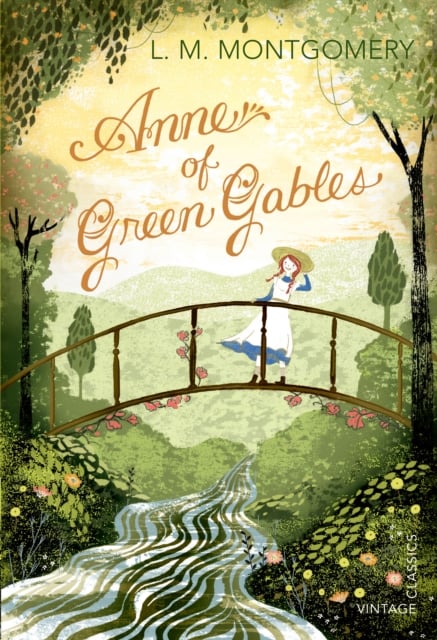“Anne of Green Gables”
I did not read “Anne of Green Gables” for the first time until high school, which is surprising, considering how many times I have seen the masterful 1985 movie adaptation. Either way, it’s a story I’ve always loved, and it only seemed fitting to revisit this poignant description of girlhood during Women’s History Month.
We meet Anne on the platform of a train station, daydreaming about the nearby cherry tree and waiting to be picked up. Anne is an intelligent, imaginative orphan with freckles and red hair, features she continually despairs over — “‘I can’t be perfectly happy. Nobody could who had red hair.’”
She gets picked up by Marilla and Matthew Cuthbert, who were expecting a boy, not a girl, to help around their homestead, Green Gables. But through some mix-up, they get Anne. Matthew immediately takes a liking to the young chatterbox, and Marilla realizes she doesn’t want to send Anne away to worse circumstances, so they decide to keep her.
Marilla is a strict and serious woman who scoffs at idleness, daydreams and frills of any kind, and Matthew, her brother, is a hard worker whose defining personality trait is shyness. Anne, dreamy and dramatic and full of commentary about anything and everything, is the opposite of them both.
Their contrasting personalities make for an entertaining household dynamic. Lost in daydreaming, Anne forgets to add flour to the cake batter and drags out simple tasks for extended periods, which drives Marilla up the wall. But Matthew is content to listen to Anne, and Anne doesn’t mind supplying the lion’s share of the conversation, so they enjoy many afternoons together.
Green Gables is located in the town of Avonlea on Prince Edward Island in Nova Scotia, and the book is filled with enchanting descriptions of its beauty.
“The water was a glory of many shifting hues — the most spiritual shadings of crocus and rose and ethereal green, with other elusive tintings for which no name has ever been found.”
Anne’s imagination runs wild in Avonlea. She renames the trees, ponds and lanes with her own more romantic monikers, like “Snow Queen” and “The Lake of Shining Waters.” Though others, especially Marilla, are inclined to scoff, her enthusiasm invites everyone to more deeply appreciate the beauty of their home.
The book follows Anne from age 11 to 15. She quickly adjusts to life at Green Gables, and she excels in school, spurred to excellence by her rivalry with her classmate Gilbert Blythe.
Anne’s best friend, or “kindred spirit,” as she is apt to say, is Diana Barry, a steady, if somewhat nervous, balance to Anne’s confident, tempestuous self. Attached at the hip from the day they meet, the two girls spend their growing-up years together, sharing every moment of sorrow, happiness and adventure.
At one point, Anne spends an evening in tears, hating Diana’s future husband — “I cannot ever live without her. But I know very well when we grow up that Diana will get married and go away and leave me.” The relationship between Anne and Diana was one of my first introductions to the joy of female friendship. They are supportive, affectionate, silly and serious all at once.
Anne makes friends with nearly everyone she meets, even those she doesn’t initially like, and her spirit earns her the love of even the prickliest personalities, from Marilla to the nosy neighbor Rachel Lynde to Diana’s grumpy Aunt Josephine.
“‘Kindred spirits are not so scarce as I used to think. It’s splendid to find out there are so many of them in the world.’”
Anne is surprisingly self-aware, but she is still a preteen, which makes for many dramatic speeches that are both insightful and comically naive — “That is one of the advantages of being thirteen. You know so much more than you did when you were only twelve.”
It’s rare to see a protagonist so aware of their own flaws and so willing to embrace the struggle of personal growth. Anne approaches herself and the world with open arms.
In her eyes, every day is overflowing with excitement and wonder, and this optimism carries her through hard times — from silly mishaps, like a botched hair dyeing incident and a cake flavored with liniment instead of vanilla, to the real tragedies of illness and death.
Anne is refreshingly honest and impossibly hopeful, and each time I revisit her story, I fall in love with her zest for life.
“‘Dear old world, you are very lovely, and I am glad to be alive in you.’”

